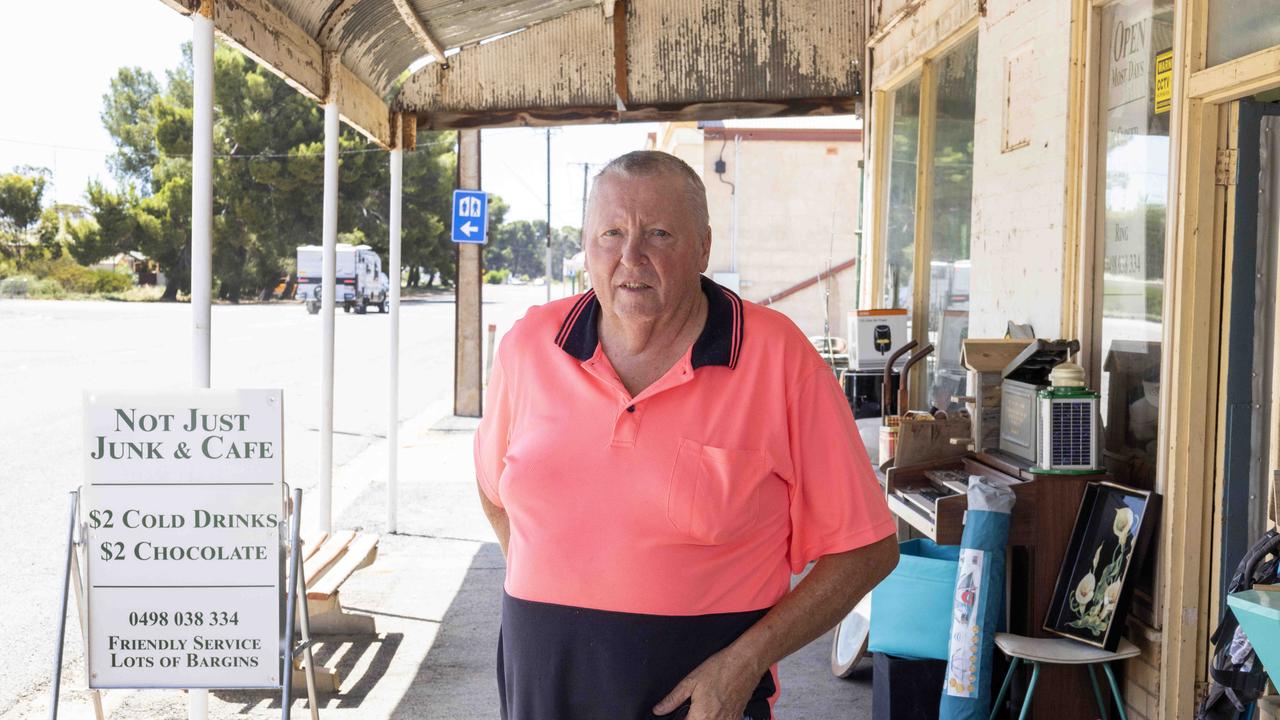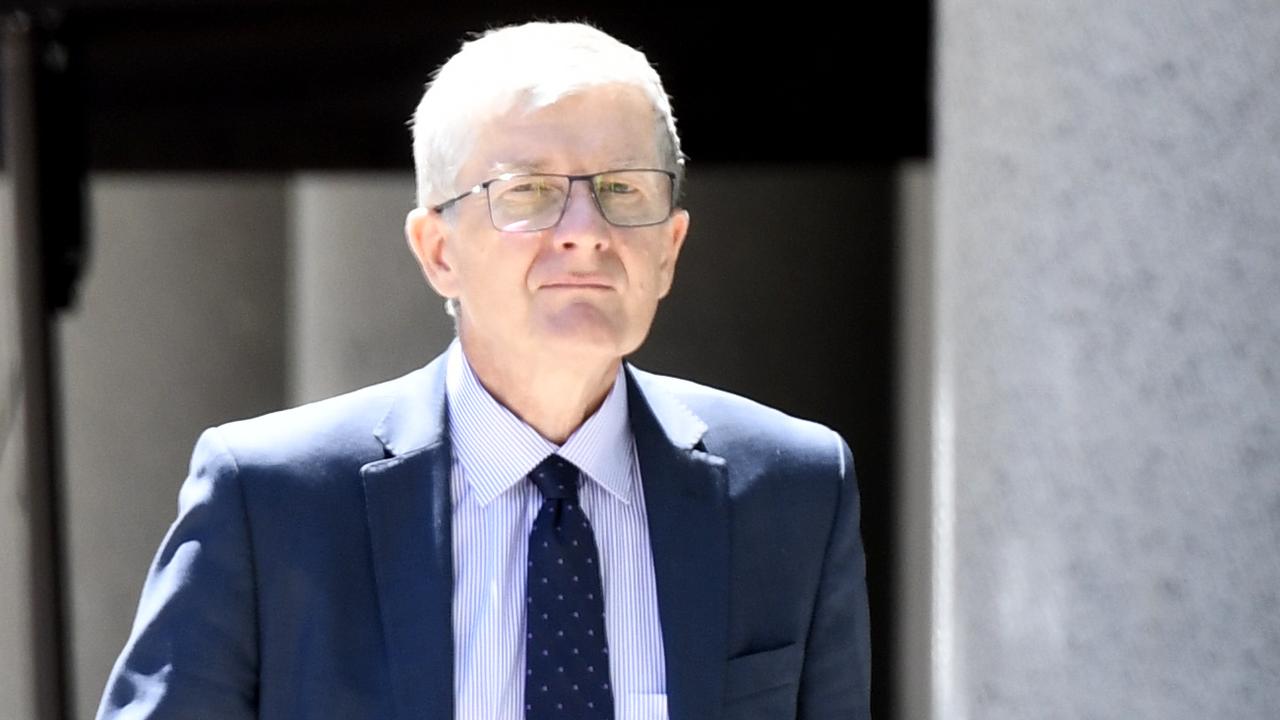One of the men that helped put Snowtown on the map will be free to roam the streets once again and community members are worried
With the helper of the “bodies in the barrels murders” set to be back on the street, the town he made notorious has community members worried.

SA News
Don't miss out on the headlines from SA News. Followed categories will be added to My News.
The one thing the people of Snowtown are most worried about with the release of Mark Haydon is the possibility he may one day turn up in the town to revisit a place he helped make unfairly notorious.
Some are worried the convicted criminal could still be dangerous, or even hold a grudge against the town, or are concerned it just brings unwanted attention back to Snowtown.
The 1990s South Australian serial killing spree known as “the bodies in the barrels murders” is back in the news this week, owing to the imminent release of one of the men involved.
Mark Ray Haydon did not take any lives but played a key part in hiding the macabre mass execution from law enforcement and the public.

Between August 1992 and May 1999, three men – John Justin Bunting, Robert Joe Wagner and James Spyridon Vlassakis – committed a series of murders.
Bunting was convicted of having committed 11 murders, while Wagner was found to have committed 10 and Vlassakis four.
Haydon pleaded guilty to assisting in two of the murders.
Snowtown Hotel owner Mark Anders said “hopefully the legal side of things has been put in place that will protect the community but you never know’’.

“Twenty five years he kept his nose clean in prison … hopefully he has been rehabilitated but most likely he has a very big grudge to bear on society and hopefully he doesn’t do it here,’’ Mr Anders said.
“I genuinely don’t want him to come anywhere near the place. We don’t need any more notoriety. We don’t need any more headlines. We don’t need these things. The town has slowly recovered over 24 years.’’
In Snowtown on Thursday there were a variety of opinions expressed about Haydon’s impending release.

Some declined to comment at all, not interested in dragging up the past again for public consumption.
Others were worried about someone with Haydon’s criminal past being released at all.
But everyone wanted to impress there was far more to Snowtown than the tragedy that had been forced on it by a group of serial killers.
Local business owner and retired farmer Greg Stevens said he had no problem with Haydon’s release.
“He should be released, he has done his time,’’ Mr Stevens said.
“You would start to question the justice system if you put him in any longer.’’
Still, Mr Stevens said the dumping of the victims in Snowtown’s old State Bank building changed the town.

“At the time, innocence was lost in Snowtown. Young mothers with children did not feel safe,’’ Mr Stevens said.
The bank building is now a weekend bric-a-brac shop owned by Rob van der Veen who bought it 12 years ago. Mr Van der Veen said he had no fears about Haydon.
“I’m from Melbourne, nothing will scare me, we had gangland shootings over there,’’ he said.
“He is 65 and only a little bloke, he can’t do much harm.’’
But Haydon’s release is still a reminder of what happened in the beige brick bank building just across the street from the Snowtown Hotel.

Many point out that even though only one of the murders was carried out in Snowtown, the notoriety lingered. As Mr Stephens pointed out, many left town. Property prices also plunged and selling a house was a struggle.
There was serious thought given to changing the name to Rosetown. A kind of macabre tourism sprung up as people would detour through the town to have a look at the bank.
Sometimes they would not even stop. Just take a couple of frames from a moving vehicle.
One theory is that they were just too scared to stop the car. John McCready moved to Snowtown three years ago. He was retired and attracted by peace and quiet of country living.
Mr McCready opened his shop, Not Just Junk five months ago and said the upside of the town’s history was that travellers would pop in from the highway for a look.
“People come through all the time and look at the bank and come into my
shop,’’ he said. “It brings people into the town and some spend a bit of money.’’
He’s also had some weirder visitors, recently allowing a “ghostbusters’ crew to sweep his shop.

Apparently, he had one in the corner, not that McCready had ever noticed before. And his neighbours at the bank?
“There were a few more there,” McCready said. Snowtown locals emphasise the sense of community in the area. Deanna, who didn’t want her surname published, works at Snowtown Solutions and owns a second hand shop on Fourth St. She moved to the town in 2009.
She said it was mainly because it was possible to buy a house for $20,000 but said the locals were always friendly and helpful. Deanna said after the news broke about Haydon’s expected release she had about 20 people in the shop.

“They wanted him to stay locked up,’’ she said. Wakefield Regional Council Mayor Rodney Reid said a “stigma” remained over the town innocently connected with the atrocities.
His personal view – and not that of the council he took pains to say did not have an official opinion – was that demolishing the now privately owned bank building could have avoided the morbidly curious visitors.“Removal of the building might have been a solution – if there is nothing to come and see, why would they come?” he said.

“Snowtown had nothing to do with the atrocities, someone just happened to store the barrels there and as a result, there’s a form of stigma over the town still to this day.” It could take another generation or two to completely die out, he said.
More Coverage
Originally published as One of the men that helped put Snowtown on the map will be free to roam the streets once again and community members are worried








